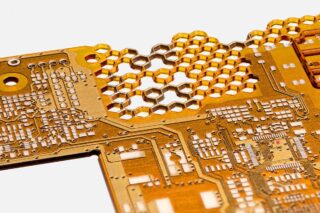While the development of 5G and 5G-advanced standards is still in progress, operators and network chip makers are already at work on defining the sixth generation of mobile communication networks. Here’s what we know so far on the future of mobile technologies.
3GPP, the global consortium that oversees the development of telecommunication standards, has announced that the preliminary work on the 6G specification has already started. While 5G has already begun delivering groundbreaking use cases, especially in the industrial and manufacturing, thanks to ultra-low latency and higher data throughput, 6G promises to take it even further by enabling connected technologies that today can only be imagined.
Integrating Physical and Digital Worlds
The goal with 6G is to make connectivity even more ubiquitous, enabling a seamless integration of the physical and digital worlds. The widely accepted expectation is that, on the telecommunications level, 6G will enable new multi-sensory technologies such as remote holographic solutions, allow for more effective and instantaneous V2X (vehicle-to-everything) technologies, or enhance the capabilities of AR and VR mobile visors and AI-based devices.
These and many other advanced use cases will be made possible by the enhancement of fundamental KPIs such as peak throughput (up to 1TBps in the most optimistic scenario), location precision of devices and connected sensors (up to plus or minus 1cm), and connection density (up to 100 per square meter).
Energy Efficiency
The energy efficiency of 6G networks will also increase exponentially, with a reduction of consumption of up to 1000% in comparison with 5G. The new technology will require much less power for networks to run and reduce how much the devices consume to connect to them. The result will be a significant reduction in carbon emissions to run the entire telecommunication ecosystem.
Regarding the envisioned use cases, 6G will build upon the road already traced by 5G. While applications such as holographic video calls, immersive telepresence, and AR/VR have the potential to revolutionize the consumer and business markets, 6G promises to have a radical impact on many other sectors as well.
Thanks to improved latency, extreme energy efficiency, and high data throughput, the new technology will enable the implementation of connected sensors onto virtually everything. This will be groundbreaking for applications like twinning, especially in the industrial sector.
Digital Twins
Thanks to 6G and the wider availability of always-on and always-connected sensors, it will be possible to create digital twins with a much higher fidelity that can adapt to changes and updates to physical environments in real-time. This new ability to finally create digital and real-time replicas of everything, from production lines to networks, from deployed products and solutions to facilities, will inevitably revolutionize how we test and measure almost anything.
While the 3GPP has already started defining the new standard, 6G will still take up to six or seven years from now to become a reality. According to the current roadmap, the consortium will start working on the initial definitions in 2025, to deliver the first 6G specs “Release” in 2028. After that, operators will be able to start building real-world networks realistically within one to two years.
If everything goes to plan, we can expect 6G to fully enter the production phase around 2030, with an increasingly wider availability of the technology in the following five years.











